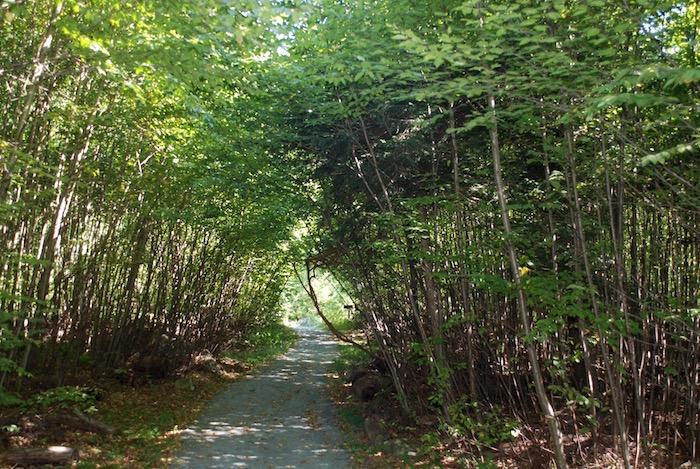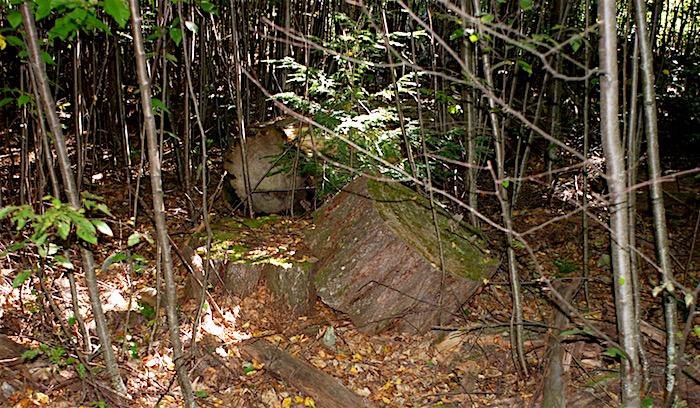
Where towering hemlocks once stood, black birch thickets now line the Limberlost Trail in Shenandoah National Park/Kurt Repanshek
Hiking trails don't have to meander for miles over hill and dale to be worthwhile, and the Limberlost Trail in Shenandoah National Park is proof of that.
From the trailhead located at Milepost 43 about a mile south of Skyland Lodge, the Limberlost Trail rambles less than 1.5 miles in a loop, yet quickly pulls you away from Skyline Drive and takes you into one of the last vestiges of Shenandoah's mighty hemlock forests.
Once upon a time these towering trees, which can climb more than 100 feet into the sky, lined most of this trail. But a nonnative bug -- the hemlock wooly adelgid -- has had a devastating impact on them. The insects, which came over from Asia and were first spotted in Virginia in 1951, feast on the trees' starch reserves, with a fatal ending.
Years ago, due to the many dead hemlocks rising above the Limberlost Trail, the Park Service wound up cutting down an estimated 1,000 trees, rather than chance they might topple over on hikers. Today as you hike the trail you pass under the arching trunks of black birch thickets that have filled in where the hemlocks once reigned. On the ground in the thickets you can see the toppled hemlock trees, their trunks now home to moss.
At the trailhead, a placard explains that not just the adelgid changed this forest. So, too, did hurricanes and ice storms that toppled and bent trees. Look carefully and you'll see evidence of ancient lava flows that cooled into columnar joints. The trail, which is handicap accessible, also takes you past stands of mountain laurel, an evergreen shrub that practically bursts with clusters of pink and white flowers in June.
In the years before Shenandoah became a national park, George Freeman Pollock and his wife, Addie Nairn Pollock, saved the hemlocks that were growing here by paying loggers $10 per tree not to cut them down. While most of the park's hemlocks have been lost to the wooly adelgid, park staff are hard at work to see them rebound. (Watch the Traveler for more on this story in the months ahead).

Long downed hemlock trees now are being taken over by mosses along the Limberlost Trail in Shenandoah National Park/Kurt Repanshek
As for the trail's unusual name, Mr. Pollock pulled it from a novel about a young woman who lived on the edge of the Limberlost Swamp in Indiana.
Roughly halfway into the hike you'll come to a wooden bridge across White Oak Canyon Run with the creek flowing through the rocky streambed below. Before the wooly adelgid came along, this creek was lined with hemlocks.
If you're short on time, you can loop back up to the parking area at the trail. If you have time on your hands, tie into the White Oak Canyon Trail and head deeper into the landscape and the Upper and Lower White Oak Canyon falls.
Traveler footnote: Consider donating to the Shenandoah National Park Trust, which funded the ADA compliant bridge over White Canyon Run.
If You Go:
Trailhead: Milepost 43, Limberlost Trail parking lot.
Distance: 1.3 miles roundtrip; longer option to continue on down White Oak Canyon Trail.
Difficulty: Easy
Maps: Download and print out the park map.



Comments
I hiked this trail the first time with my daughter in 1980 when the hemlocks were still standing, and before the trail was all-access. The vibe is very different today, of course, but this is still a lovely walk during my annual spring stays at Skyland Lodge.